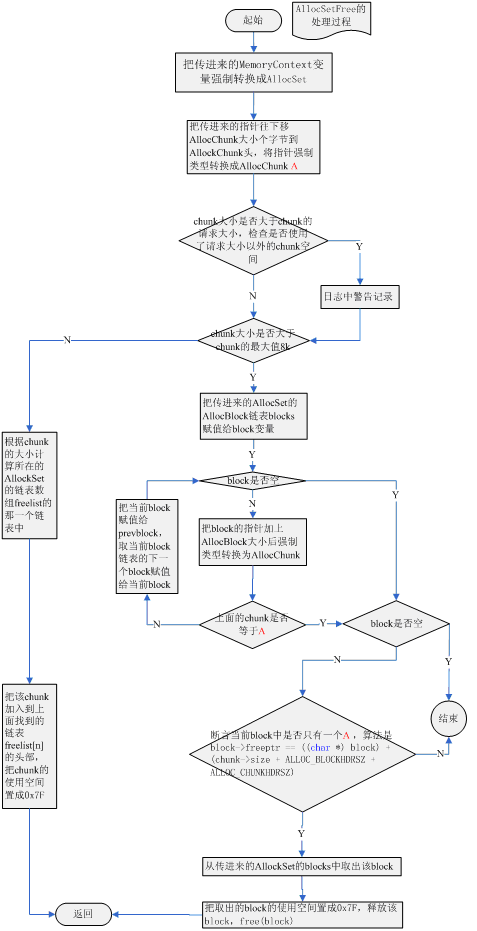pg的内存管理机制二:AllocSet/MemoryContext的内存回收
?
话说MemoryContextMethods结构里的函数实现了pg里AllocSet/MemoryContext的内存管理机制,定义见下面。
typedef structMemoryContextMethods
{
???? void ?? *(*alloc) (MemoryContext context, Sizesize);
???? /* call this free_p in case someone #define's free() */
???? void???? (*free_p)(MemoryContext context, void *pointer);
???? void ?? *(*realloc) (MemoryContext context, void *pointer, Size size);
???? void???? (*init)(MemoryContext context);
???? void???? (*reset)(MemoryContext context);
???? void???? (*delete) (MemoryContext context);
???? Size???? (*get_chunk_space) (MemoryContext context, void *pointer);
???? bool???? (*is_empty)(MemoryContext context);
???? void???? (*stats)(MemoryContext context);
#ifdef MEMORY_CONTEXT_CHECKING
???? void???? (*check)(MemoryContext context);
#endif
} MemoryContextMethods;
?
其中free_p由静态函数AllocSetFree()实现,具体签名在下面。它实现了AllocSet/MemoryContext相关的内存回收机制。
static void AllocSetFree(MemoryContext context, void *pointer)
下面就写MemoryContextMethods.free_p的实现者AllocSetFree()这个函数。先上图,然后分块解读处理流程。

?
AllocSetFree回收内存流程图
?
传进来了AllocSet和内存指针,根据该内存指针,找到对应的AllocChunk,检查该chunk中是否有非法写的情况,若有,在日志中写警告记录。接着检查该chunk大小是否大于chunk的最大值8k,把小于8k的AllocChunk加到传进来的AllocSet中空闲AllocChunk链表数组freelist中同样大小的AllocChunk链表头部。大于8k的AllocChunk是根据需要分配的只包含一个AllocChunk的AllocBlock,找到包含超大AllocChunk的AllockBlock,释放该AllocBlock以备其他需要时malloc,如果没有找到大于8k的AllocChunk的AllocBlock,在日志中写错误记录。具体看流程图吧。
?